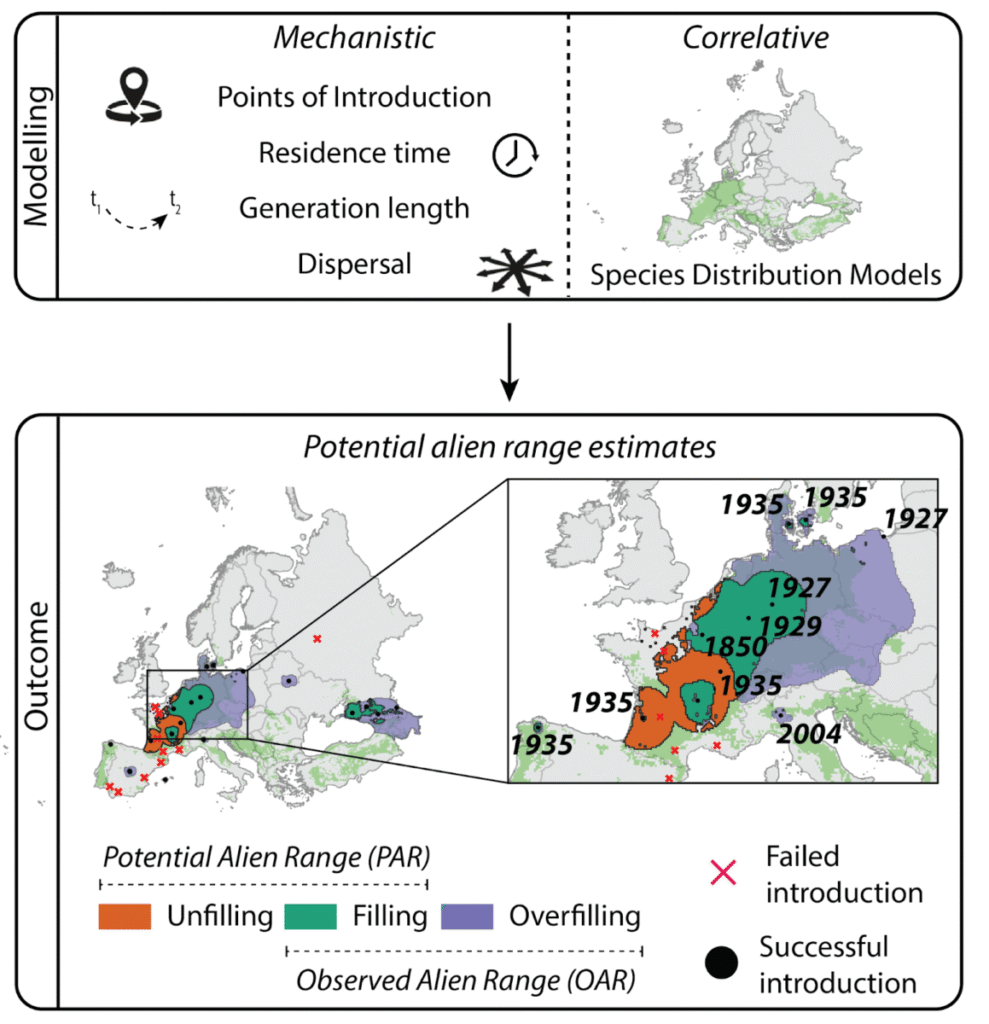A new study led by Lisa Tedeschi, in collaboration with colleagues from Czech Republic, Portugal, and Italy, was recently published in Oikos. In this paper, they modelled the potential alien ranges of 46 established alien mammals in Europe using species’ introduction localities, residence time, dispersal ability, generation length and climatic suitability. The authors compared potential and observed ranges through three range indices: range filling (portion of potential distribution occupied), overfilling (portion of observed distribution unexpectedly occupied), and unfilling (portion of potential distribution currently unoccupied), and investigated the effects of native range size, introduction pathways, and socio-economic variables on uncovered patterns.
The results show that despite the long-lasting history of mammal introductions into Europe, none of the study species filled most of their suitable available area, when considering dispersal from the points of introduction. Rather, those alien mammals are also spreading outside their potential suitable areas. At the same time, many species currently do not occupy a vast proportion of their potential range in Europe, meaning that part of the continent is still susceptible to invasion. These patterns are primarily driven by human population density, which influences alien mammals’ introduction and establishment. These findings therefore confirm human agency as an important driver of alien mammals’ distribution and spread in Europe, highlighting that modifying human attitudes and regulations towards these taxa is key to limiting further spread.
Read the full article here!

Reference: Tedeschi L, Lenzner B, Schertler A, Wessely J, Biancolini D, Capinha C et al. (2025) Patterns and drivers of range filling of alien mammals in Europe. Oikos: 1–17. 10.1002/oik.11388

